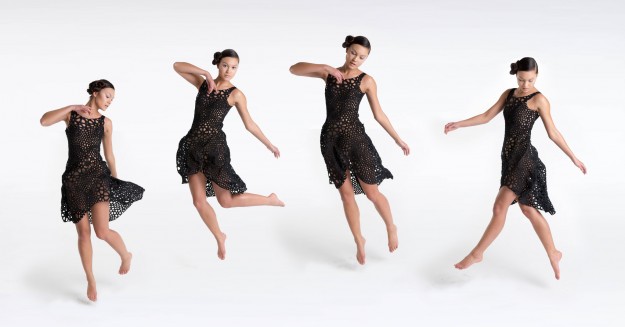I am constantly fascinated by how quickly and dramatically industries can evolve. Especially thrilling are the paradigm-flipping breakthroughs that create entirely new worlds of opportunities. (Overused) example 1: realization that the world was round, not flat. Example 2: the ability to genetically modify living organisms.
The fashion industry evolves in vaguely circular ways – new fashions are inspired by ones that came before. More subtle but perhaps more significant are fabrication and artisanship updates. Historically, fabrics came from nature. We’ve since created synthetic fabrics, and now we have new manufacturing technologies that completely stretch (pun not intended) the definition of ‘clothing fabric’.
I’m excited to talk about additive manufacturing, more commonly referred to as 3D-printing. (It’s technically a subset of additive manufacturing). I’m eagerly awaiting the near future when your body type, style preferences, and wardrobe needs are stored in a system, and you can create completely-customized outfits for your every need. This is what an initial dress prototype looks like (courtesy of the Shapeways blog)
So why does 3D-printed fashion intrigue and appeal to me so much?
1. In a world that increasingly values a fully-customized experience, 3D-printed fashion is an incredibly powerful wardrobe solution.
We’re familiar with customized print products such as stamps, mugs, and business cards (I used to do product development for one such company). But those products aren’t fully customized. You can’t create a stamp that’s say, the size of a playing card, and you can’t create a mug with curved indentations that perfectly conform your fingers and palm.
In contrast, 3D-printed products can be made in exactly the desired dimension and color. It would be fairly simple for someone petite to modify a digital dress pattern to have a shorter skirt length. A style could be rendered in black and gold for a formal occasion, or in pastel watercolors for a spring look. And could you imagine how convenient it would be to quickly print a dress for the wedding you forgot was this upcoming weekend?
2. 3D-printed fashion has virtually no manufacturing footprint.
I’ve transitioned from fast fashion to ecological-conscious fashion. Why? Consider this article about the cost, resources, and chemicals needed to manufacture, transport, and discard of fast fashion. Not only is it wise to make meaningful self-investments, we really need to make thoughtful and responsible choices for our environment’s well-being.
A 3D-printed garment only requires a customized digital pattern to be printed. If it’s done by a company such as Shapeways, shipment of the piece is the only manufacturing footprint contributor. And imagine – if you had your own 3D printer, you could make your own garments at home! Either way, you have the benefit of knowing exactly how and where your clothing was made (no illegal labor or extensive transportation pollution involved).
3. There is a time and place for everything. Much faster than you may guess, we are just now entering the age of consumer-accessible 3D printing – from fashion to food to furniture – and virtual reality.
I made my first 3D printing in college in 1998. It was a bulky, heavy camera mock made of densely-packed cornstarch and hardened by a resin soak. It’s a far cry from today’s light, delicately intricate models and jewelry. 3D-printed fashion is similarly sophisticated. Made of small, linking modular pieces, it’s flexible and fluid, enabling comfortable movement with a lace-like aesthetic.
So, just how accessible is additive manufacturing? One option is to purchase your own 3D printer (an investment of a few thousand dollars). But that requires an upfront investment (fine for a dedicated artist/engineer, but not a casual hobbyist/consumer), and the size of your printed object is constrained by the machine’s print volume.

Shapeways makes additive manufacturing products much more accessible by enabling you to either upload your own 3D digital model to be printed, or for you to purchase designs from their marketplace. I can’t wait for the day when I can order a customized outfit online or perhaps even create it at home!
xoxo and aloha,
![]()





